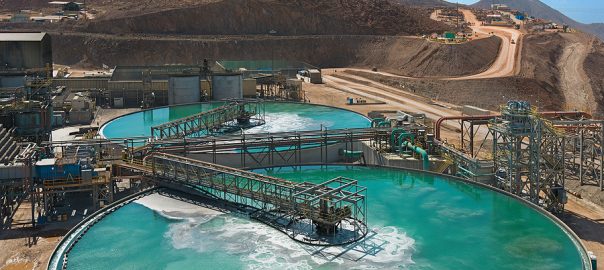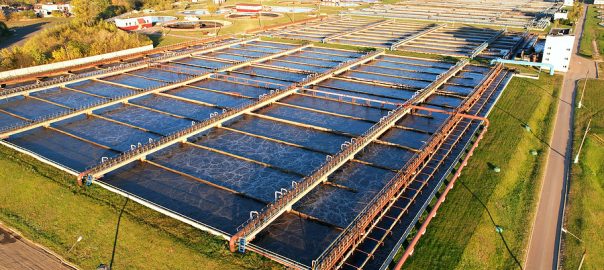
Water plays a key role in your industry, but you can’t just release that water to a municipal water treatment plant or a nearby river or lake. It contains contaminants that cause environmental damage and make the work the municipal wastewater treatment plant does a lot harder.
There’s another aspect to consider. The work you do requires the purest possible water for the foods, beverages, or medications you make. If there are any contaminants in the water coming into your plant, it could become a health hazard or reduce the quality of your product. That’s another concern many industries face.
Industrial wastewater and water treatment solutions are never one-size-fits-all. The wastewater treatment solutions for a brewery are going to be less useful to a plastics extrusion company. The solutions for that plastics extrusion company will not be helpful to a poultry processing plant. A baby formula or pharmaceutical industry will have both aspects to consider.
A standard water treatment system isn’t always going to work for your needs and can end up being a waste of money. Customized wastewater treatment solutions are advantageous for several reasons. Learn more about why your business needs to work on a water treatment system that matches the work you do.
Four Advantages of Customized Industrial Water Treatment Solutions
There are four key advantages to customized water treatment solutions that industries experience when making upgrades. Check them out.
Solutions Are Customized to Your Business’s Specific Needs
When a water treatment system is designed for you, it’s customized to your exact needs. If your plant makes baby formula and baby formula powder, the water you use needs to be ultra-filtered and boiled to ensure any bacteria is killed and filtered away. However, a company that makes water-based paints may not need to be as stringent.
It’s More Efficient and Effective
Customized solutions are also more effective. If mineral build-up could clog your equipment, you need a water treatment system that takes care of this issue. The amount of calcium in municipal water may be acceptable, but it’s not acceptable for your needs. Customized treatment systems make sure the water you use is appropriate for your industrial processes.
This also makes your company’s processes more efficient. You don’t have to take pre-treatment steps before the water you draw from the city is usable.
Customized Solutions Help You Save Money
Going back to the efficiency that customized water treatment solutions offer, this saves money. You’re using less energy during the different steps your workers follow.
Suppose you don’t use water that’s been specially treated for your industrial plant. You end up with a run of wasted product due to unexpected contaminants in the city’s water due to an unexpected broken main that allowed groundwater and soil into the water line. With a water treatment plant in your company, you’re cleaning water to your needs. As long as you keep your plant maintained and test water quality frequently, you’ll know the quality is fine.
The other aspect is if you install a customized industrial wastewater treatment plant before you release the water to the sewers. If you release high quantities of PCBs, chemicals, or fats, oil, and grease (FOG) to the sewers, the wastewater treatment plant that receives the sewer water has to work harder to get the water clean.
This drives up costs for the municipality’s customers. They’re not going to be happy to watch their costs soar because of your company. You could end up facing costly fines or lawsuits. Take preventative measures and keep your costs down.
It Helps the Environment
When you clean and reuse your industry’s water or clean it and release it to the city’s wastewater treatment plant, you’re helping keep dangerous chemicals from the area’s water. It keeps chemicals from making their way into rivers, streams, lakes, ponds, and the ocean.
Explore Examples Demonstrating the Advantages of Customized Water Treatment Solutions
Explore several examples that demonstrate how a customized water treatment solution helped different companies save money, improve quality, and become more efficient.
# 1 – Pepsi’s Solution to High Sugar Levels in Wastewater
Pepsi realized the importance of lowering its plant’s carbon footprint and needed to find a way to dispose of expired or poor-quality products. To do this, the company planned to clean the wastewater it generated, but it didn’t have room for a full-size wastewater treatment plant.
They partnered with wastewater treatment experts to get a smaller system that uses anaerobic bacteria treatments to break down the sugar. But, those bacteria also generate electricity in the process. The result is that upwards of 85% of the sugar in their wastewater is removed in just one shift. The company lowered the amount of high-sugar wastewater being sent to the district.
#2 – Microsoft
Microsoft realized they were using too much water. They decided to collect rainwater across their campus and install a water treatment plant in their facility. The goal is to no longer rely on public water at all by 2030.
The rainwater is treated and used in their cooling towers, bathrooms, and landscaping needs. The water from flushed toilets and sinks is recaptured and treated in a continual cycle. Plus, they added watersheds or measures to protect watersheds in their different locations to help put more water back in streams, rivers, and lakes.
#3 – Semiconductor Plants and Chip Manufacturers
Several companies that fabricate chips and semiconductors needed to make big changes. A large chip fab can use as much as 10 million gallons each day. That’s an incredible waste of water in regions where water is running low.
Taiwan was one of the first countries to experience the importance of water recycling. A severe drought could have ended operations from some of the world’s biggest semiconductor manufacturing plants. To end this problem, they invest in water treatment plants. These plants clean the water to a level it is suitable for reuse to make more chips or semiconductors.
#4 – The Clothing Industry
In Asia, three rivers in Dhaka were killed by the industrial dyes used in the fabrics used to make clothing. The World Bank identified more than five dozen dangerous chemicals that were in these rivers. The UN Sustainable Development Goal 6 has raised awareness of this issue and measures are underway to clean the chemicals from the wastewater and make it possible for the factories to reuse the treated water.
Partner With an Expert in Clean Water
You can’t just buy water treatment equipment and put together a system you think will do what it needs. You need to have an expert in water treatment to help you plan the best path forward.
Save money, have higher quality products, and lessen the burden on your municipality’s wastewater treatment plant with customized water treatment solutions. Lakeside Equipment is backed by close to a century of water treatment solutions and advancements. We can help you find high-quality solutions that do everything you need and more, at a price point that matches your budget.
Arrange a consultation with Lakeside Equipment’s water treatment specialists. Our engineers, field technicians, and support personnel are by your side every step of the way. Reach Lakeside Equipment online or by phone.





